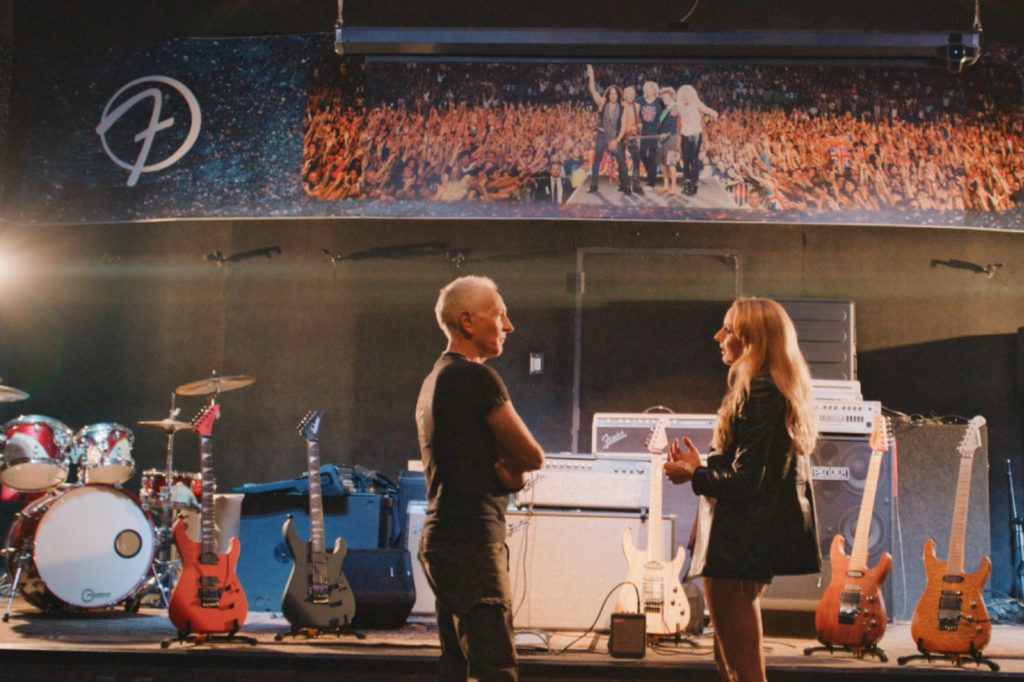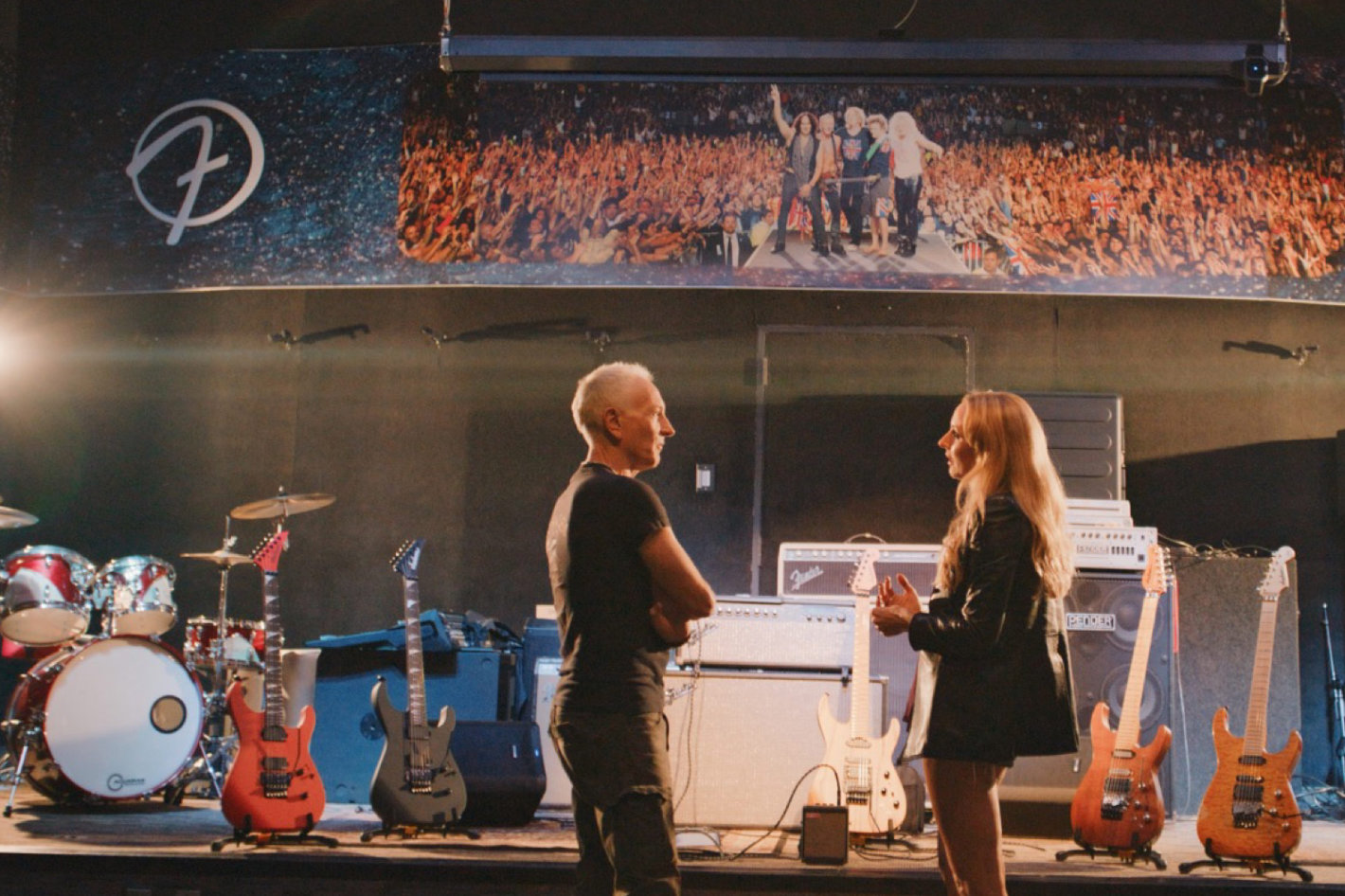 The story of the production of Life in Six Strings is as exciting as the unscripted and intimate interviews with world famous guitarists conducted by presenter and music journalist Kylie Olsson.
The story of the production of Life in Six Strings is as exciting as the unscripted and intimate interviews with world famous guitarists conducted by presenter and music journalist Kylie Olsson.
Sony Award winning presenter and music journalist, Kylie Olsson has interviewed some of the biggest names in music from the likes of Aerosmith, Jimmy Page and Black Sabbath for Sky Arts, VH1 America, Palladia and the BBC. On Life in Six Strings,” an eight part documentary series on AXS TV, she takes viewers through an intimate view of many of the best guitarists in the world.
The near cinematic coverage of Olsson’s conversations in the musicians’ homes and places of interest belies the actual run and gun production of the docuseries. This was greatly assisted by look direction and post work by James Tonkin, founder of Hangman, the London based production studio, who was the right choice for this series, as Tonkin is one of the UK’s most in demand music documentary directors, working with acts such as The Rolling Stones, U2, AC/DC, Taylor Swift, and many more.
“I was brought on board by the series’ creator and director [Olsson] as director of photography and to oversee post production,” explains Tonkin. “I shot the first two episodes and established the series’ visual tone and style, managing all aspects of post at Hangman, from receiving rushes to delivering the final product.”
A labor of love
“The intent was to differentiate it from episodic fly on the wall TV,” he notes. Tonkin’s experience and Kylie’s vision for the series – fueled by her on passion for music – set the tone for the series, which follows the music journalist as the meets, as she wrote, “with 8 guitarists and travel to their homes to see their collections, their favorite restaurants, cafes and generally get a glimpse into what it is like to be a musician for a day. They also happen to give me a guitar lesson along the way. Now airing on AXS TV.”
Tonkin’s vision was influenced by the director’s affection for the film “A Star Is Born,” leading to the use of anamorphic lenses and long takes on a gimbal, coupled with handheld cameras for cutaways. The series is also interspersed with personal in car conversations, shot using “set and forget” cameras in a specialist rig, while the crew followed in a separate vehicle.
“It was fast and fluid, all shot over a single day. Kylie wanted to be able to show up at someone’s house, walk in, and chat with them,” says Tonkin. “There wasn’t any time to pre light the house. It had to run seamlessly, very off the cuff, but on screen, it had to look considered and beautiful throughout.”
Here is the whole story about post production, shared by Blackmagic Design. One note before you continue reading: if you like music and have a chance to watch the series, do it. It’s a labor of love!
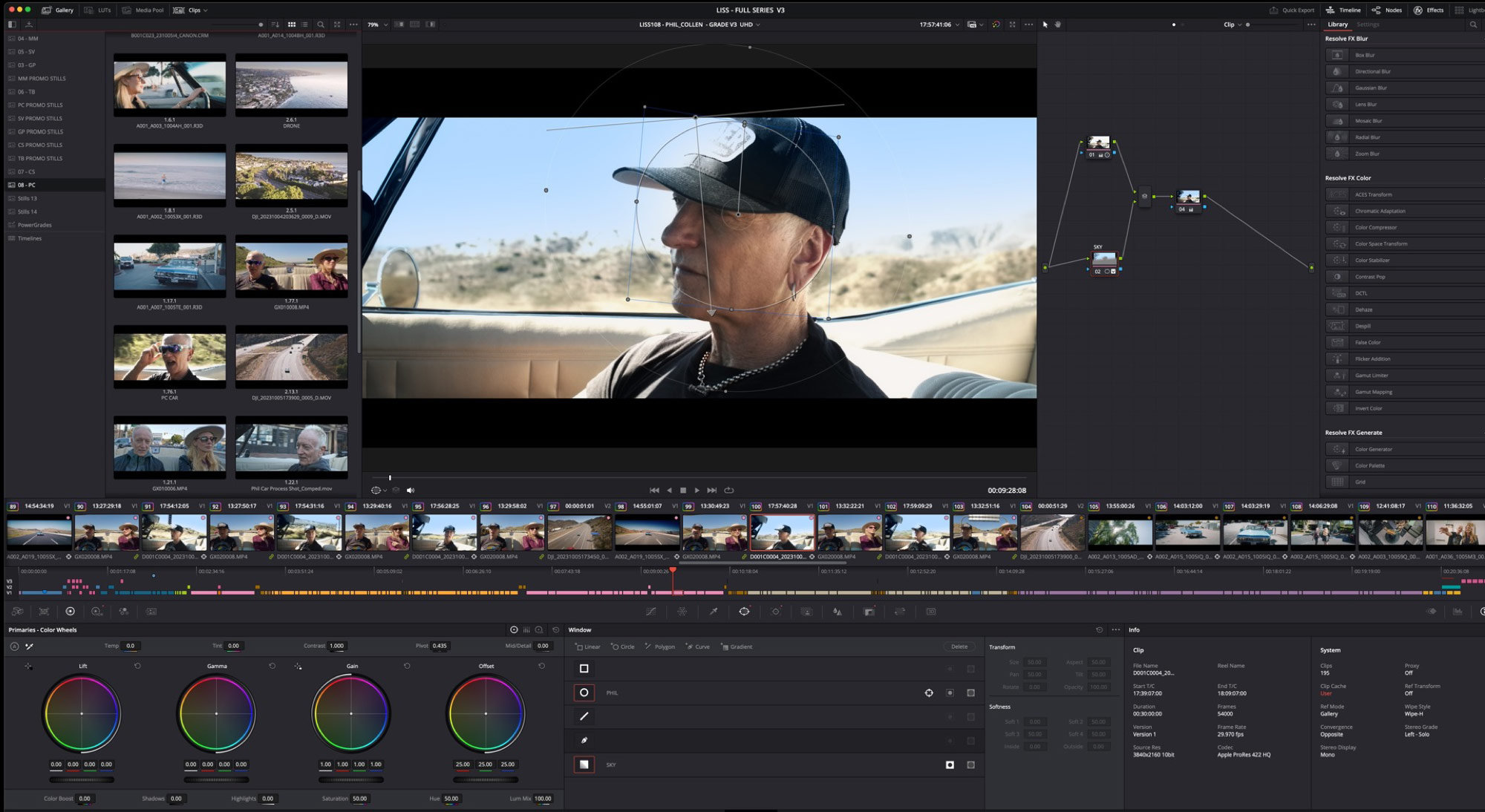 Collaboration in Post
Collaboration in Post
The post production phase utilized DaVinci Resolve Studio and Blackmagic Cloud, enabling Hangman to implement collaborative working on the docuseries’ post, including the edit, grade and finish, with mastering in 4K for an HD delivery.
“It’s as simple as setting up the project, sending an offline editor a link, and ensuring they have access to the proxy rushes,” Tonkin explains. “They can then open the project and effectively see what I’m seeing.”
Tonkin highlights the versatility and efficiency of DaVinci Resolve Studio as an editing tool, allowing for quick transitions between editing and picture finishing. “Resolve is fantastic as an editor; its strength is that everything is under one hood,” he continues.
“On completion, Leigh Brooks, the offline editor, would send me a locked DRT file with the sound set up as an AAF. We had a 22 minute episode that we could conform and start color grading within an hour of receiving the file,” said Tonkin.
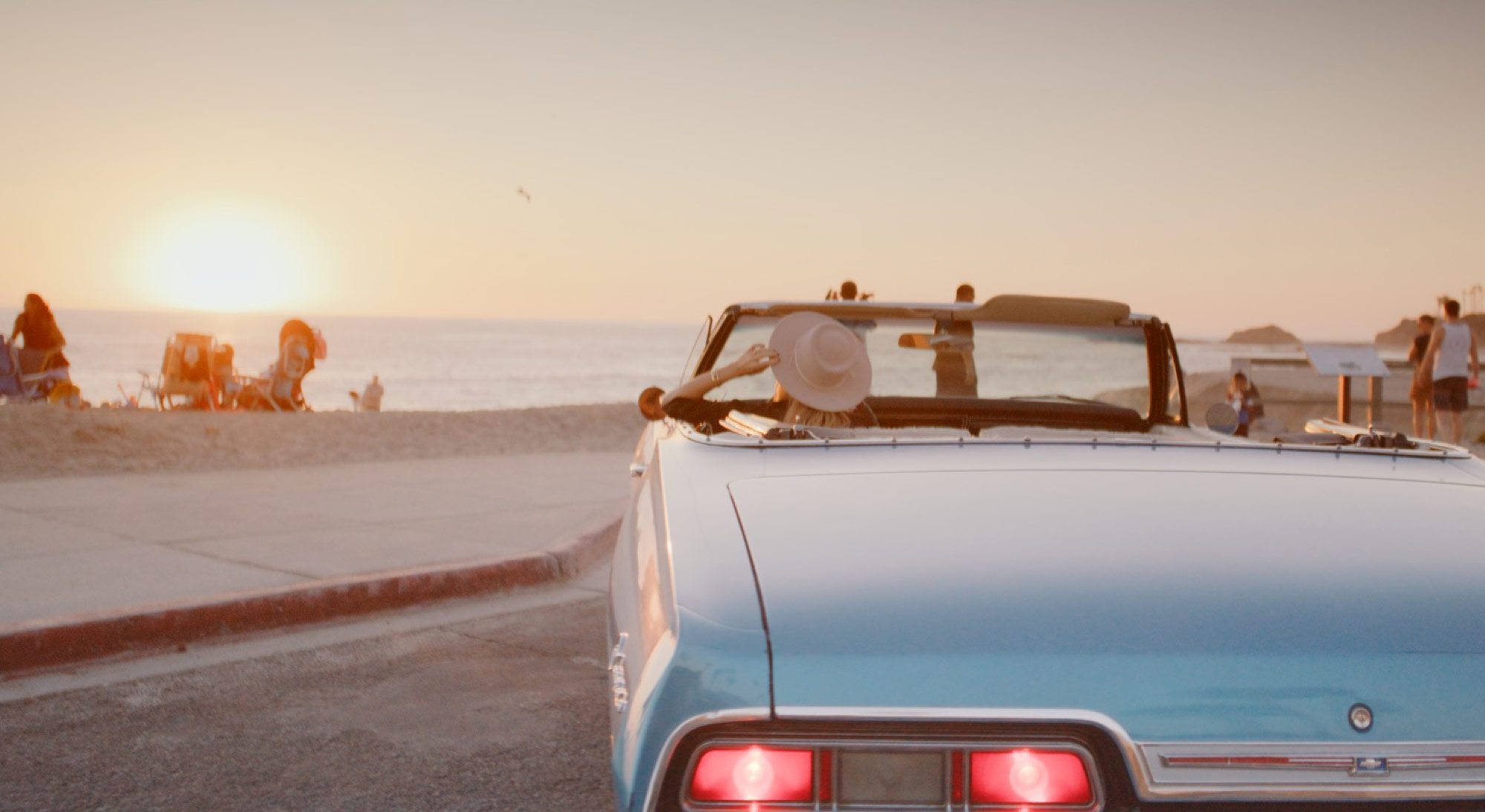 DaVinci Neural Engine
DaVinci Neural Engine
In the final stages of post, Tonkin focused on color grading, stabilization, aspect ratio adjustments and shot enhancements, working directly with the original 6K RED R3D source files. Any problems, such as blown highlights, were solved with the help of DaVinci Resolve Studio’s magic mask tool.
“On the final episode, I had to replace the sky where it had completely clipped in the car. I used the magic mask to identify and separate first the person, and then the sky, and applied another node for sky replacement. This allowed me to add a hue behind what would normally be an overly blown out, white sky,” noted Tonkin.
DaVinci Resolve Studio’s AI supported automated subtitles function significantly streamlined the post process, especially given the dialogue heavy nature of the episodes. “Each episode is wall to wall dialogue. However, Resolve’s AI takes three or four minutes to analyze and transcribe that. I watched it through again, checking for any corrections, but it had a greater than 90 percent accuracy rate in my opinion,” he continues.
Tonkin adds, “Previously, when channel delivery requirements dictated closed captions, I’d instantly be writing off time that would otherwise be better spent on creative aspects of the job. But now that that’s under the hood in DaVinci Resolve, it’s something that only takes an extra half an hour of my time.”
A layer of film grain was also added to impart an analog warmth, aligning with the series’ musical theme. “I found it incredibly powerful to add grain as an adjustment layer. I could add titles over the top of that layer, and the film grain doesn’t sit on top of the text. I would cut the adjustment layer for ad breaks and add a one second black slug. Using adjustment layers to maintain the look, and then to cut the look where needed, was effective,” he explained.
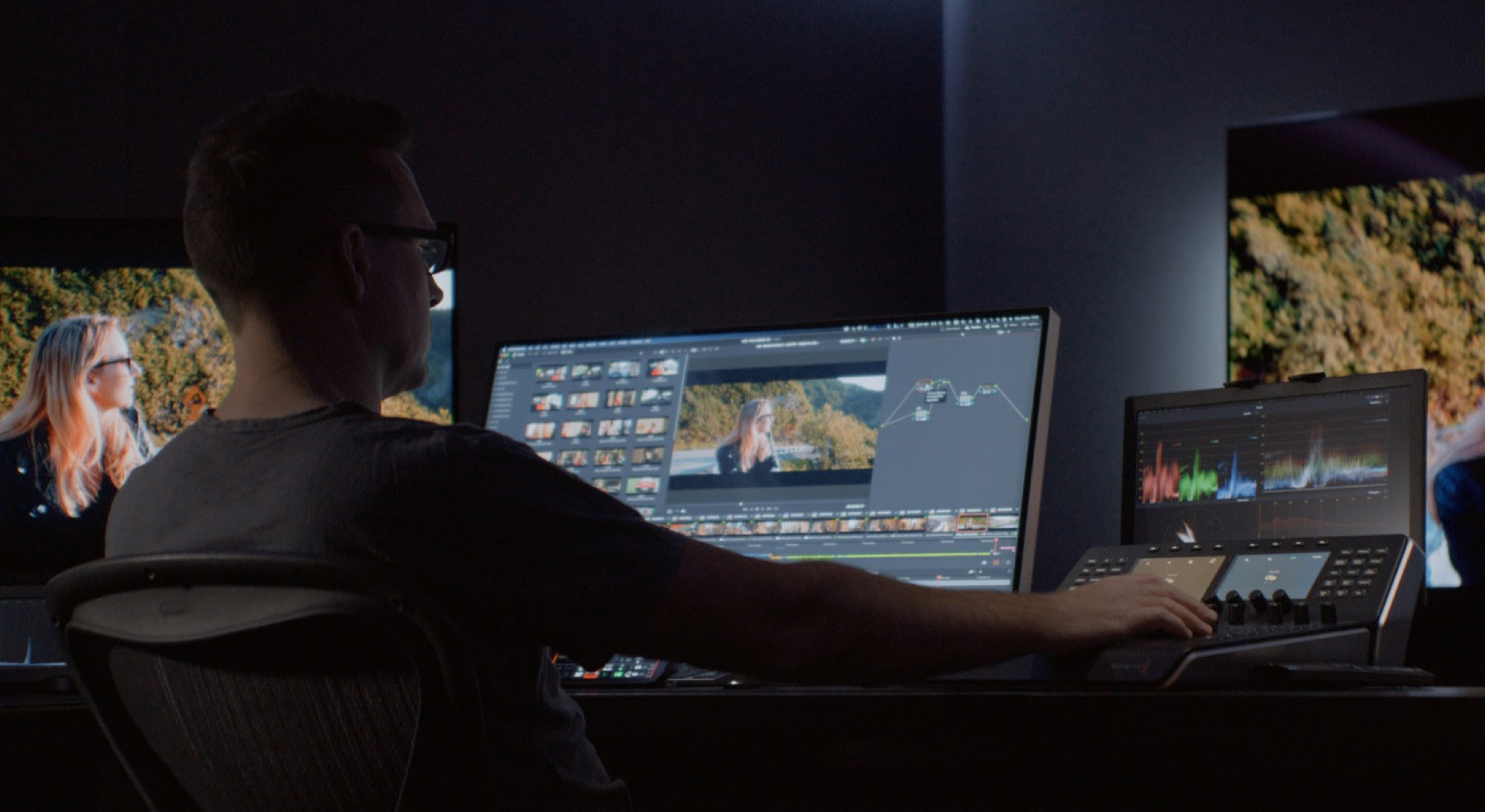 Mastering in 4K
Mastering in 4K
Tonkin allocated approximately six hours of post for each episode. “I’d first create a 4K master and then export an HD MXF for broadcast delivery to AXS TV,” notes Tonkin. “That export, along with the subtitle file and multitracked 14 stems of audio, with delivery through Media Shuttle, was a 10 minute task.”
“We had a great delivery partner with AXS TV, but I also want to credit Kylie who single handedly pulled this together. She can draw great stories from the people that she’s interviewing,” concludes Tonkin. “The finesse we’ve managed to give it in the grade and the finish has upped the production value, but it’s the content that matters the most.”

Filmtools
Filmmakers go-to destination for pre-production, production & post production equipment!
Shop Now